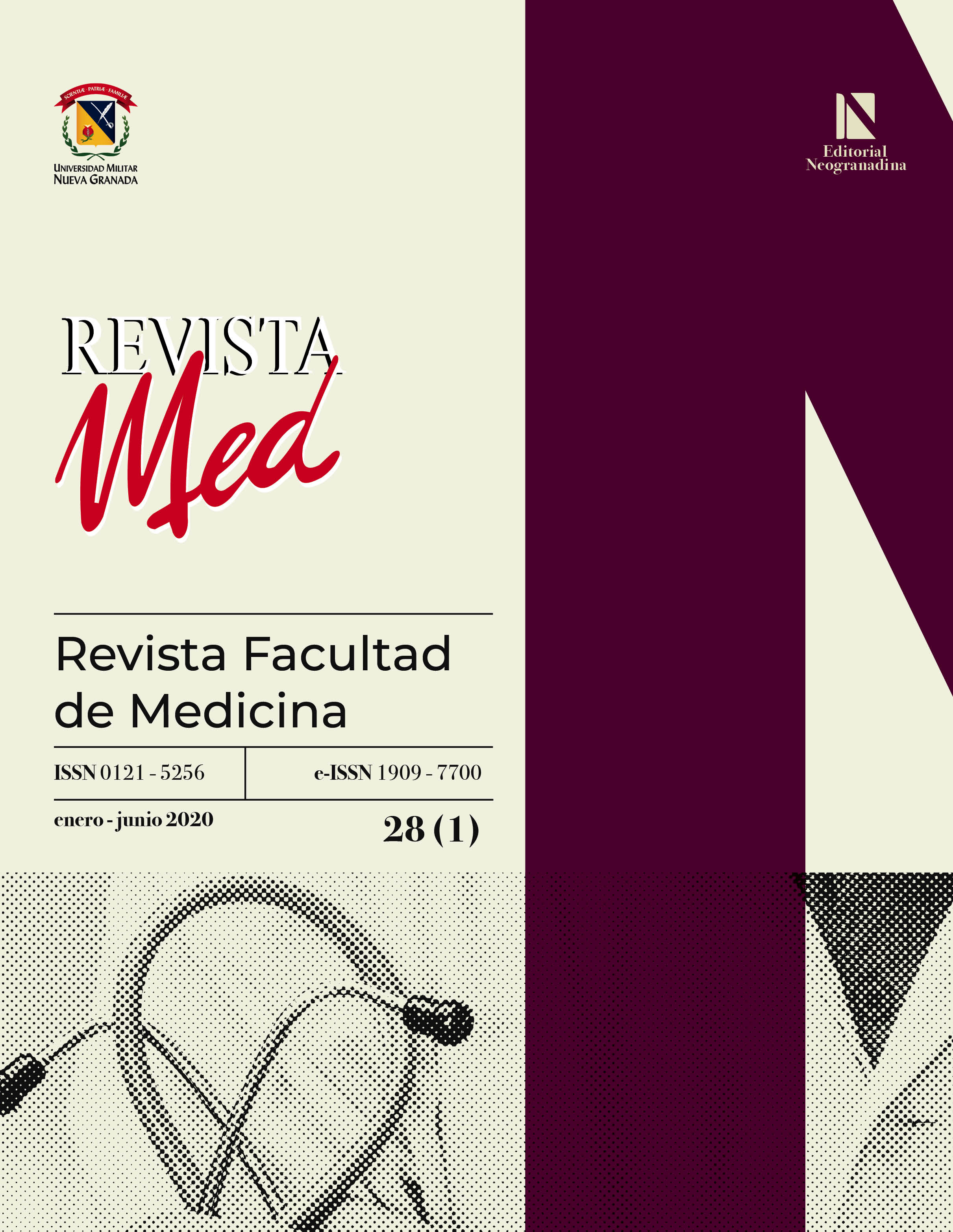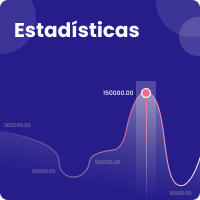Evaluación de la reserva ovárica: pasado, presente y futuro
Resumen
La necesidad de investigar la reserva ovárica para apoyar la consejería acerca del éxito o fracaso de los tratamientos de reproducción asistida, principalmente en pacientes con riesgo de falla reproductiva, ha generado la descripción y el uso de pruebas histológicas, basales, dinámicas y ultrasonográficas. La presente revisión tiene como objetivo describir y analizar las diferentes pruebas de evaluación de la reserva ovárica, sus limitaciones y ventajas, y ampliar la información referente a las que, por sus características y resultados, son más utilizadas en la actualidad. Para cumplirlo se realizó búsqueda en bases de datos, incluyendo investigaciones originales, revisiones sistemáticas, metaanálisis, reportes de casos y consensos de expertos, en inglés y español, desde 1980. En cuanto a los resultados, puede decirse que pruebas como la biopsia ovárica, medición de Inhibina B, test de estímulo con FSH o con GnRH, y con citrato de clomifeno, han caído en desuso; la medición de la FSH, si bien todavía utilizada, claramente tiene menor capacidad predictiva que el Conteo de Folículos Antrales (CFA) y la Hormona Antimülleriana (HAM). Se concluye que el CFA y la medición de ham son las pruebas más recomendadas, con mejor capacidad predictiva y que, no obstante algunas limitaciones, permiten un acercamiento a la estimación de la respuesta al estímulo ovulatorio. Se plantean opciones para el futuro que permitirán, a mediano plazo, resolver los interrogantes sobre la “verdadera” reserva ovárica.
Descargas
Referencias bibliográficas
Broekmans F, Kwee J, Hendriks D, Mol B, Lambalk C. A systematic review of test predicting ovarían reserve and ivf autcome [Internet]. Human Reproduction Update. 2006;12(6):685-718. doi: https://doi.org/10.1093/humupd/dml034
McIlveen M, Skull J, Ledger W. Evaluation of the utility of multiple endocrine and ultrasound measures of ovarian reserve in the prediction of cycle cancellation in a high-risk ivf population [Internet]. Human Reproduction. 2007;22(3):778-785. doi: https://doi.org/10.1093/humrep/del435
Sills E, Alper M, Walsh A. Ovarian reserve screening in infertility: Practical applications and theoretical directions for research [Internet]. European Journal of Obstetrics & Gynecology and Reproductive Biology. 2009;146:30-36. doi: https://doi.org/10.1016/j.ejogrb.2009.05.008
Verhagen T, Hendriks D, Bancsi L, Mol B, Broekmans F. The accuracy of multivariate models predicting ovarian reserve and pregnancy after in vitro fertilization: a meta-analysis [Internet]. Human Reproduction Update. 2008;14(2):95-100. doi: https://doi.org/10.1093/humupd/dmn001
Ferraretti A, La Marca A, Frauser B, Tarlatzis B, Nargund G, Gianaroli L, on the belhalf of the eshre working group on Poor Ovarian Response Definition. eshre consensus on the definition of “poor response” to ovarian stimulation for in vitro fertilization: the Bologne criteria [Internet]. Human Reproduction. 2011; 26(7):1616-24. doi: https://doi.org/10.1093/humrep/der092
La Marca A, Ferraretti A, Palermo R, Ubaldi F. The use of ovarian reserve markers in ivf clinical practice: a national consensus [Internet]. Gynecol Endocrinol. 2016;32(1):1-5. doi: https://doi.org/10.3109/09513590.2015.1102879
Podfigurna A, Lukaszukb K, Czyzyka A, Kunickic M, Maciejewska-Jeskea M, Jakielc G, et al. Testing ovarian reserve in pre-menopausal women: why, whom and how? [Internet]. Maturitas. 2018; 109:112-17. doi: https://doi.org/10.1016/j.maturitas.2017.11.014
Younis J, Ben-Ami M, Ben-shlomo I. The Bologna criteria for poor ovarian response: a contemporary critical appraisal [Internet]. Journal of Ovarian Research. 2015;8(76):2-10. doi: https://doi.org/10.1186/s13048-015-0204-9
Johnson N, Bagrie E, Coomarasamy A, Bhattacharya S, Shelling A, Jessop S, et al. Ovarian reserve tests for predicting fertility outcomes for Assisted Reproductive Technology: the International Systematic Collaboration of Ovarian Reserve Evaluation protocol for a systematic review of test accuracy [Internet]. bjog. 2006; 113:1472-80. doi: https://doi.org/10.1111/j.1471-0528.2006.01068.x
Lass, A. Assesment of ovarian reserve - is there a role for ovarian biopsy? [Internet]. Human Reproduction. 2001;16(6):1055-57. doi: https://doi.org/10.1093/humrep/16.6.1055
Navot D, Rosenwaks Z, Margalioth E. Prognostic assessment of female fecundity [Internet]. Lancet. 1987;330(8560):645-47. doi: https://doi.org/10.1016/s0140-6736(87)92439-1
Padilla S, Bayati J, Garcia J. Prognostic value of the early serum estradiol response to leuprolide acetate in in vitro fertilization [Internet]. Fertility and Sterility. 1990;53(2): 288-94. doi: https://doi.org/10.1016/s0015-0282(16)53283-x
Fanchin R, Ziegler D, Olivennes S, Taieb J, Dzik A, Frydman R. Exogenous follicle stimulating hormone ovarian reserve test (efort): a simple and reliable screening test for detecting ‘poor responders’ in in-vitro fertilization [Internet]. Hum Reprod. 1994;9(9):1607-11. doi: https://doi.org/10.1093/oxfordjournals.humrep.a138760
Koning C, Pop-Snijders C, Schoemaker J, Lambalk C. Elevated fsh concentrations in imminent ovarian failure are associated with higher fsh and lh pulse amplitude and response to gnrh [Internet]. Human Reproduction. 2000;15(7): 1452-56. doi: https://doi.org/10.1093/humrep/15.7.1452
Bukman A, Heineman M. Ovarian reserve testing and the use of prognostic models in patients with subfertility [Internet]. Human Reproduction Update. 2001;7(6):581-90. doi: https://doi.org/10.1093/humupd/7.6.581
Abdalla H, Thum M. An elevated basal FSH reflects a quantitative rather than qualitative decline of the ovarian reserve [Internet]. Human Reproduction. 2004;19(4):893-98. doi: https://doi.org/10.1093/humrep/deh141
Magee B, Reid R. A Pragmatic Approach to Hormonal Testimg in the Assessment of Disorders of Female Reproduction [Internet]. Int J Womens Health Wellness. 2016;2(3):022. doi: https://doi.org/10.23937/2474-1353/1510022
Licciardi F, Lui H, Rosenwaks Z. Day 3 estradiol serum concentrations as prognosticators of ovarian stimulation response and pregnancy outcome in patients undergoing in vitro fertilization [Internet]. Fertility and Sterility. 1995;64(5):991–94. doi:10.1016/s0015-https://doi.org/0282(16)57916-3
Corson S, Gutmann J, Batzer F, Wallace H, Klein N, Soules M. Inhibin B as a test of ovarian reserve for infertile women [Internet]. Human Reproduction. 1999;14(11):2818-21. doi: https://doi.org/10.1093/humrep/14.11.2818
Al-Azemi M, Killick S, Duffy S, Pye C, Refaat B, Hill N. Multi-marker assessment of ovarian reserve predicts oocyte yield after ovulation induction [Internet]. Human Reproduction. 2011;26(2):414-22. doi: https://doi.org/10.1093/humrep/deq339
Fouany M, Sharara F. The role of anti-Mullerian hormone in assisted reproductive medicine [Internet]. Middle East Fertility Society Journal. 2011;16:103-106. doi: https://doi.org/10.1097/GCO.0b013e3283384911
Ducatelli M, Marchetti I, Benecia H, Gismondi F, Neuspiller N, Coco R. La influencia de amh en los resultados de fiv/icsi [Internet]. Reproducción. 2009;24: 182 - 84. Disponible en: http://www.fecunditas.com.ar/publicados/influencia_de_amh.pdf
Lambert-Messerlian G, Plante B, Eklund E, Raker C, Moore R. Levels of antimüllerian hormone in serum during the normal menstrual cycle [Internet]. Fertil Steril. 2016;105:208–13. doi: https://doi.org/10.1016/j.fertnstert.2015.09.033
Iliodromiti S, Anderson R, Nelson S. Technical and performance characteristics of anti-Müllerian hormone and antral follicle count as biomarkers of ovarian response [Internet]. Human Reproduction Update. 2015; 21(6)698–710. doi: https://doi.org/10.1016/j.fertnstert.2014.12.114
Tal R, Seifer D. Ovarian reserve testing: a user´s guide. Expert Reviews [Internet]. American journal of obstetrics and Gynecology. 2017;17(2):129-140. doi: https://doi.org./10.1016/j.ajog.2017.02.027
Practice Committee of the American Society for Reproductive Medicine. Testing and interpreting measures of ovarian reserve: a committee opinión. [Internet]. Fertility and Sterility. 2015;103(3):e9-e17. doi: http://dx.doi.org/10.1016/j.fertnstert.2014.12.093
Kwee J, Elting M, Schats R, McDonnell J, Lambalk C. Ovarian volume and antral follicle count for the prediction of low and hyper responders with in vitro fertilization [Internet]. Reproductive Biology and Endocrinology. 2007;5(9):1-10. doi: https://doi.org/10.1186/1477-7827-5-9
Agarwal A, Agarwal S, Verma A, Shukla RC. Total Basal Ovarian Volume as a Marker of Ovarian Reserve: Myth or Reality [Internet]. Journal of Clinical and Diagnostic Research. 2018;12(2):TC13-TC16. doi: https://doi.org/10.7860/JCDR/2018/31482.11211
Chang M-Y, Chiang C-H, Hsei T-T, Soong Y-k, Hsu K-H. Use of the antral follicle count to predict the outcome of assisted reproductive technologies [Internet]. Fertility and Sterility. 1998;69(3):576-602. doi: https://doi.org/10.1016/s0015-0282(97)00557-8
Van Disseldorp J, Lambalk C, Kwee J, Looman C, Eijkemans M, Fauser B, et al. Comparison of inter and intra-cycle variability of anti-Mullerian hormone and antral follicle count [Internet]. Human Reproduction. 2010;25(1):221-27. doi: https://doi.org/10.1093/humrep/dep366
Broekmans F, Ziegler D, Howles C, Gougeon A, Trew G, Olivennes F. The antral follicle count: practical recommendations for better standardization [Internet]. Fertility and Sterility. 2010;94(3):1044-51. doi: https://doi.org/10.1016/j.fertnstert.2009.04.040
Coelho Neto M, Ludwin A, Borrell A, Benacerraf B, Dawailly D, Da Silva Costa F, et al. Counting ovarian antral follicles by ultrasound: a practical guide [Internet]. Ultrasound Obstet Gynecol. 2018;51:10-20. doi: https://doi.org/10.1002/uog.18945
Teede HJ, Misso ML, Costello MF, Dokras A, Laven J, Moran L, et al. International pcos Network. Recommendations from the international evidence-based guideline for the assessment and management of polycystic ovary síndrome [Internet]. Fertility and Sterility. 2018;110(3):364-379. doi: https://doi.org/10.1016/j.fertnstert.2018.05.004
Bonilla-Musoles F, Castillo JC, Caballero O, Raga F, Bonilla F Jr, Dolz M, et al. (2011.). El cálculo de la reserva ovárica mediante la determinación del recuento de foliculos antrales (rfa) y la hormona anti-mülleriana (ham). Cuadernos de Medicina Reproductiva. Ecografía en Reproducción en el siglo xxi. 2011;17(1):23-37.
Arce M, Loayza E, Marroquin P, Carvallo F. Conteo de folículos antrales como predictor de respuesta ovárica y de resultados de fiv/icsi [Internet]. Revista Peruana de Ginecología y Obstetricia. 2009;55(1):37-42. doi: https://doi.org/10.31403/rpgo.v55i266
Burks H, Baker M, Quaas A, Bendikson K, Chung K, Paulson R. The dilemma of counseling patients about poor prognosis: live birth after IVF with autologous oocytes in a 43-year-old woman with fsh levels above 30 miu/ml [Internet]. J Assist Reprod Genet. 2017;34:1185–88. doi: https://doi.org/10.1007/s10815-017-0986-3
Jacobs M, Reuter L, Baker V, Craig L, Sakkas D, Surrey E, et al. A multicentre evaluation of the Elecsys©anti-Müllerian hormone immunoassay for prediction of antral follicle count [Internet]. rbmo. 2019;38(5):845-52. doi: https://doi.org/10.1016/j.rbmo.2018.12.041
Committee on Gynecologic Practice. The Use of Antimüllerian Hormone in Women Not Seeking Fertility Care. acog committee opinion 773 [Internet]. Obstet Gynecol. 2019;133(4):e274-78. doi: https://doi.org/10.1097/AOG.0000000000003162
Özkan ZS. Ovarian stimulation modalities in poor responders [Internet]. Turkish Journal of Medical Sciences. 2019;49(4):959-962. doi: https://doi.org/10.3906/sag-1905-179
Sadeghi MR, Oocytes/Embryos Banking: A Vague Hope for Poor Responder Women [Internet]. Journal of reproduction & infertility. 2018;19(3):123-124. https://www.researchgate.net/publication/327369735_OocytesEmbryos_Banking_A_Vague_Hope_for_Poor_Responder_Women
Kuang Y, Chen Q, Hong Q, Lyu Q, Ai A, Fu Y, et al. Double stimulation during follicular and luteal phases of poor responders in ivf/icsi programmes (Shangai protocol) [Internet]. Reproducttive Biomedicine Inline. 2014;29(6):684-91. doi: http://dx.doi.org/10.1016/j.rbmo.2014.08.009.
Sfakianoudis K, Pantos K, Grigoriadis S, Rapani A, Maziotis M, Tsioulou P, et al. What is the true place of a double stimulation and double oocyte retrieval in the same cycle for patients diagnosed with poor ovarian reserve? A systematic review including a meta-analytical approach [Internet]. Journal of Assisted Reproduction and Genetics. 2020; 37:181–204. doi: https://doi.org/10.1007/s10815-019-01638-z
Donnez J, Dolmans MM. Fertility Preservation in Women [Internet]. N Engl J Med. 2017;377(17):1657-65. doi: https://doi.org/10.1056/NEJMra1614676
Landsberg D, Fernando S, Cohen J, Rombauts L. The Role of Fertility Preservation in Women with Endometriosis: A Systematic Review [Internet]. Journal of Minimally Invasive Gynecology. 2020;27(2):362-72. doi: https://doi.org/10.1016/j.jmig.2019.09.780
Jirge PR. Role of ovarian reserve testing in cáncer survivors [Internet]. Onco Fertil J. 2019;2:3-8. doi: https://doi.org/10.4103/tofj.tofj_1_19
Sofiyeva N, Siepmann T, Barlinn K, Seli E, Ata B. Gonadotropin – Releasing Hormone Analogs for Gonadal Protection During Gonadotoxic Chemotherapy: A Systematic Review and Meta-Analysis [Internet]. Reproductive Siciences. 2019;26(7):939-53. doi: https://doi.org/10.1177/1933719118799203
Oktay K, Harvey BE, Partridge AH, Quinn GP, Reinecke J, Taylor HS, et al. Fertility Preservation in PatientsWith Cancer: asco Clinical Practice Guideline Update [Internet]. J Clin Oncol. 2018;36(19):1994-2001 doi: https://doi.org/10.1200/JCO.2018.78.1914.
Gilabert-Estellés J. Nuevas perspectivas en la endometriosis: Desde la fisiopatología al tratamiento médico de la enfermedad [Internet]. Rev Iberoam Fert Rep Hum. 2011;28(1):15-31. Disponible en: http://www.revistafertilidad.org/articulo/Nuevas-perspectivas-en-la-endometriosis-Desde-la-fisiopatologiacutea-al-tratamiento-meacutedico-de-la-enfermedad/29
Kitajima M, Khan KN, Harada A, Taniguchi K, Inoue T, Kaneuchi M, et al. Association between ovarian endometrioma and ovarian reserve [Internet]. Front Biosci (Elite Ed). 2018;10:92-102. doi: https://doi.org/https://doi.org/10.2741/e810
Muzzi L, Di Tucci CH, Di Feliciantonio M, Galati G, Di Donato V, Musella A, et al. Antimûllerian hormone is reduced in the presence of ovarian endometriomas: a systematic review and meta-analysis [Internet]. Fertility and Sterility. 2018;110(5):932-940e1. doi: https://doi.org/10.1016/j.fertnstert.2018.06.025
Saavedra J. Controversias en el manejo Quirúrgico del endometrioma ovárico [Internet]. Rev Col Obstet Ginecol. 2002;53(4):355-66. doi: https://doi.org/10.18597/rcog.635
Sônmezer M, Taskin S. Fertility preservation in women with ovarian endometriosis [Internet]. Women’s Health. 2015;11(5):625-631. doi: https://doi.org/10.2217/whe.15.49
Findlay J, Hutt K, Hickey M, Anderson R. What is the “ovarian reserve”? [Internet]. Fertility and Sterility. 2015;103(3):628–30. doi: https://doi.org/10.1016/j.fertnstert.2014.10.037
Monniaux D, Clément F, Dalbiés-tran R, Estienne A, Fabre S, Mansanet C, et al. The Ovarian Reserve of Primordial Follicles and the Dynamic Reserve of Antral Growing Follicles: What Is the Link? [Internet]. Biology of Reproduction. 2014;90(4):85,1–11. doi: https://doi.org/10.1095/biolreprod.113.117077
Genro VK, Grynberg M, Scheffer JB, Roux I, Frydman R, Fanchin R. Serum anti-Müllerian hormone leves are negatively related to Follicular Output RaTe (fort) in normo-cycling women undergoing controlled ovarian hyperstimulation [Internet]. Human Reproduction. 2011;26(3):671-77. doi: https://doi.org/10.3389/fendo.2019.00246
Biasoni V, Patriarca A, Dalmasso P, Bertagna A, Manieri Ch, Benedetto Ch, et al. Ovarian sensitivity index in strongly related to circulating amh and may be used to predict ovarian response to exogenous gonadotropins in ivf [Internet]. Reproductive Biology and Endocrinology. 2011;9:112. doi: https://doi.org/10.1186/1477-7827-9-112
Alviggi C, Conforti A, Esteves S, Vallone R, Venturella R, Staiano S, et al. Understanding Ovarian Hypo-Response to Exogenous Gonadotropin in Ovarian Stimulation and Its New Proposed Marker-The Follicle-To-Oocite (foi) Index [Internet]. Front Endocrinol. 2018;9:589. doi: https://doi.org/10.3389/fendo.2018.00589
Ulrich N, Marsh E. Ovarian Reserve Testing: A Review of the Options, Their Applications, and Their Limitations [Internet]. Clinical Obstetrics and Ginecology. 2019;62(2):228-37. doi: https://doi.org/10.1097/GRF.0000000000000445
Alviggi C, Andersen C, Buehler K, Conforti A, De Placido G, Esteves S, et al. A new more detailed stratification of low responders to ovarian stimulation: from poor ovarian response to a low prognosis concept [Internet]. Fertility and Sterility. 2016;105(6):1452-53. doi: https://doi.org/10.1016/j.fertnstert.2016.02.005
Esteves S, Roque M, Bedoschi G, Conforti A, Humaidan P, Alviggi C. Defining Low Prognosis Patients Undergoing Assisted Reproductive Tecnology: poseidon Criteria- The Why [Internet]. Front Endocrinol. 2018;9:461. doi: https://doi.org/10.3389/fendo.2018.00461
Sfakianoudis K, Simopoulou M, Nitsos N, Rapani A, Pantou A, Vaxevanoglou T, et al. A Case Series on Platelet-Rich Plasma Revolutionary Management of Poor Responder Patients [Internet]. Gynecol Obstet Invest. 2019;84(1):99-106. doi: https://doi.org/10.1159/000491697
Jang S, Kim KH, Jun JH, You S. Acupuncture for in vitro fertilization in women with poor ovarian response: a systematic review [Internet]. Integrative Medicine Research. (2020);9(2). doi: https://doi.org/10.1016/j.imr.2020.02.003
Lu D, Zhang SH, Song DR. TMR [Internet]. Integrative Medicine. 2019;(3):e19019. doi: https://doi.org/10.12032/TMRIM201903019
Ozatik FY, Ozatik O, Yigitaslan S, Kaygisiz B, Erol K. Do Resveratrol and Dehydroepiandrosterone Increase Diminished Ovarian Reserve? [Internet]. Eurasian J Med. 2020;52(1):6-11. doi: https://doi.org/10.5152/eurasianjmed.2019.19044
Lin J, Dang Y, Guo G, Wang Z. The influence of Dehydroepiandrosterone (dhea) supplementation for in vitro fertilization in women with diminished ovarian reserve: a meta-analysis of randomized controlled trials [Internet]. Int J Clin Exp Med. 2017;10(12):15878-15885. Disponible en: http://ijcem.com/files/ijcem0059644.pdf
Schwarze JA, Canales J, Crosby J, Ortega-Hrepich C, Villa S, Pommer R. dhea use to improve likelihood of ivf/icsi success in patients with diminished ovarian reserve: A systematic review and meta-analysis [Internet]. jbra Assisted Reproduction. 2018;22(4):369-374. doi: https://doi.org/10.5935/1518-0557.20180046
Xu L, Hu C, Liu Q, Li Y. The Effect of Dehydroepiandrosterone (dhea) Supplementation on ivf or icsi: A Meta-Analysis of Randomized Controlled Trials [Internet]. Geburtshilfe und Frauenheilkunde. 2019;79(7):705-712. doi: https://doi.org/10.1055/a-0882-3791.







.png)





